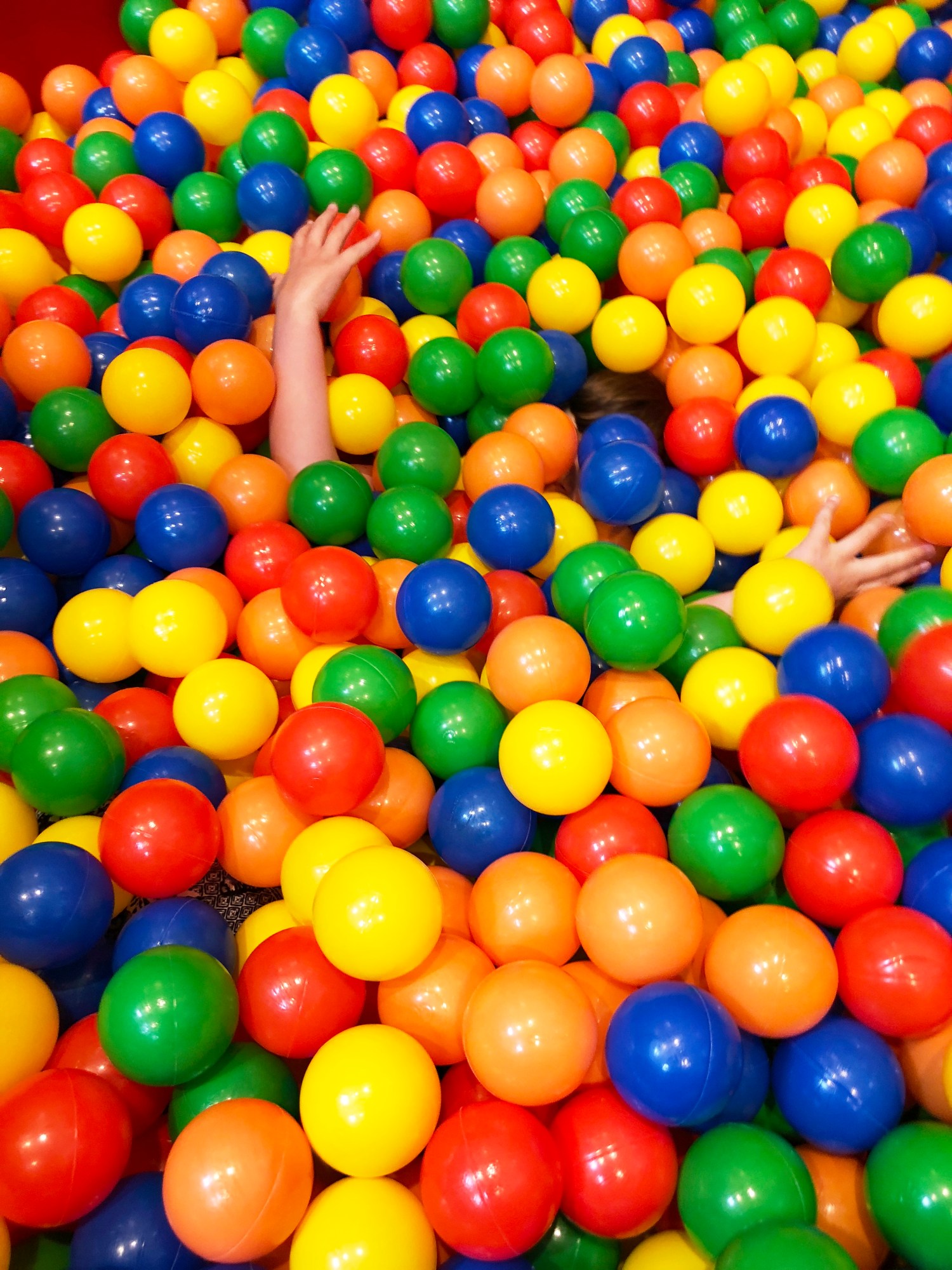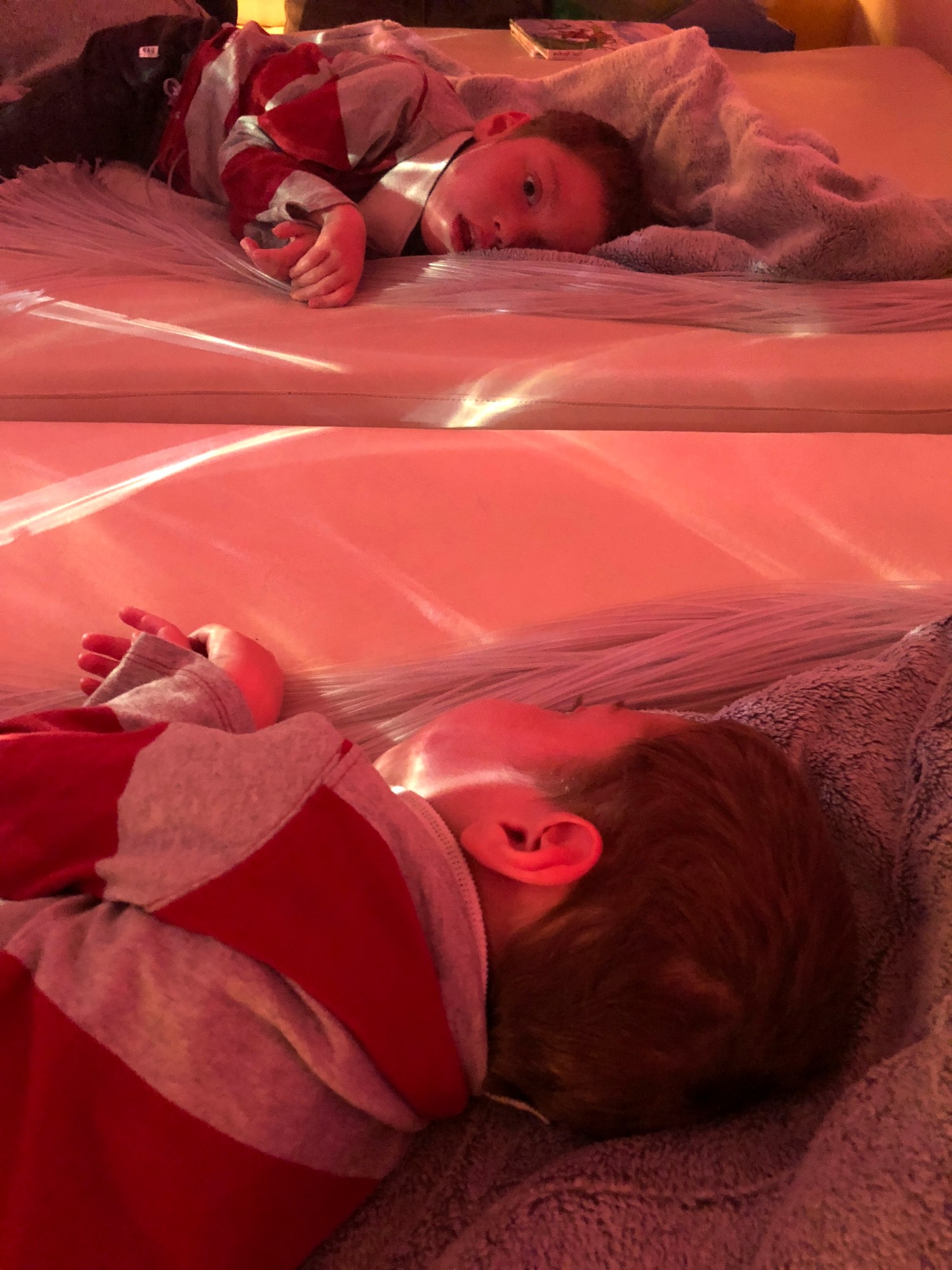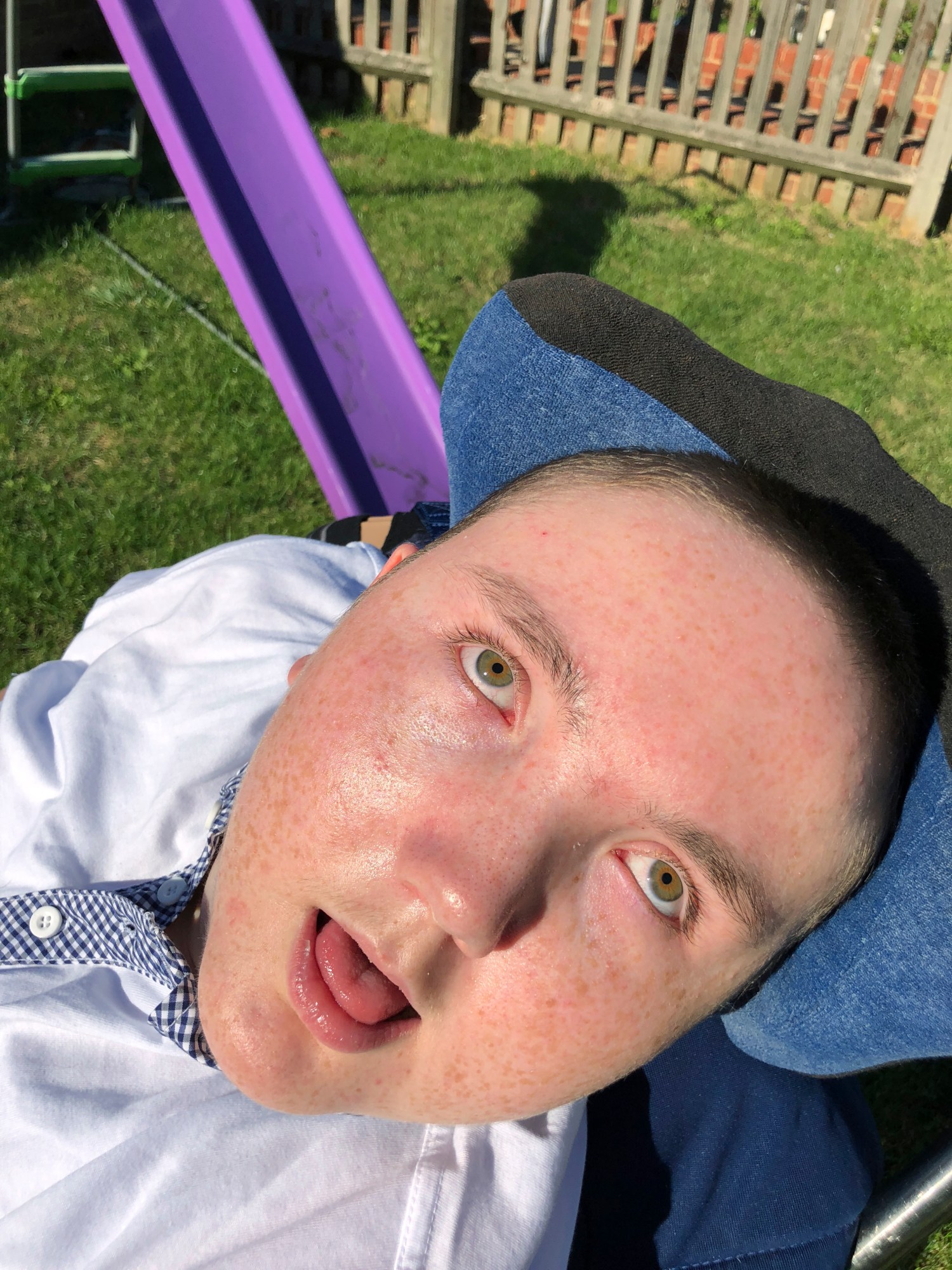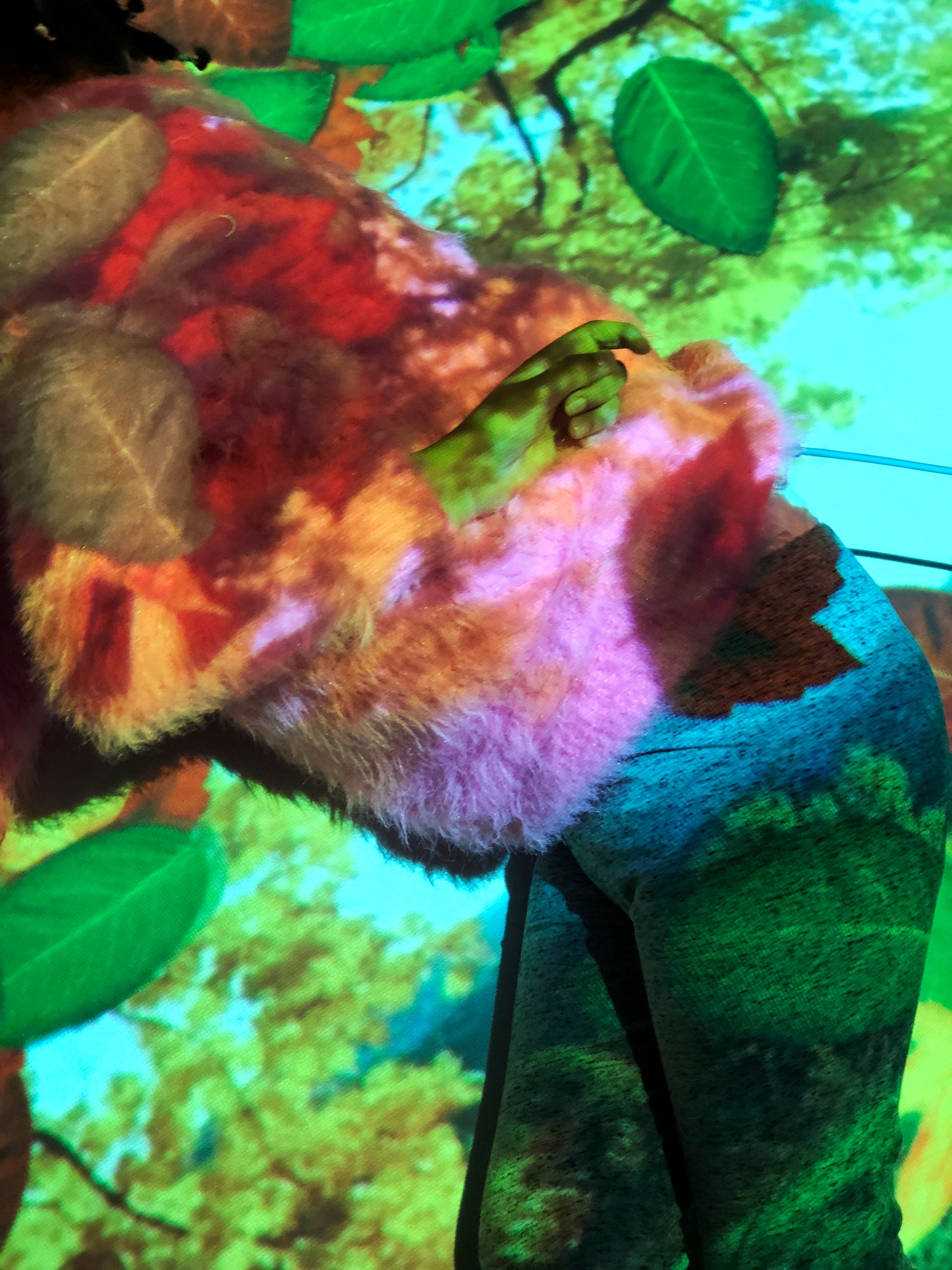Juergen Teller is standing in the middle of a large exhibition space in the basement of Bonhams auction house. He is wearing a fluorescent yellow hat and a neon orange jacket that match the colour scheme of the room. “At first the room was all dark blue, with lights positioned above the pictures,” Juergen says, signalling around the room with his hand. “Instead I chose these four different colour backgrounds, because I wanted it like a children’s room, for this to be a positive thing. A feeling of positivity despite the heaviness of the whole scenario.”
The exhibition, Demelza Kids, was shot over three months at two hospices for children with terminal conditions, with the intention of raising awareness and donations for the Demelza Hospice Care for Children. Juergen affirms that none of the images are for sale, which, when you’re in the space makes sense. As a whole the exhibition captures a spectrum of different emotions for a child in need of full-time care. Some moments are full of joy and movement, others moments are more repose. “I’ve never done this before, having different colour frames,” he says. It’s a touch that adds another layer of depth to the show, lessening the sometimes harshness of the hospital backdrops, as well as the sparseness of an exhibition space.

Demelza got in touch with Juegen last year. “They simply asked me, they sent me an email,” he says, wandering from photo to photo as he talks. “I thought it was very interesting. I suggested we meet and I thought about it very hard, the consequences of taking on such a job, whether or not it might seem opportunistic. I thought that this is something that could be really good for everybody involved. A way of helping.”
Wanting to remain sensitive and understanding of the complex stories of his subjects and their families, Juergen looked to find a balance between being invisible and intrusive in these spaces. “It’s impossible not to be there,” he says. “You don’t just want to be a fly on the wall and doing reportage. In some way you have to make your presence felt, you know? That means being sensitive towards the parents when you go there, and when you don’t go there, when they have to have their private moment.”

“We get so annoyed, lose our patience when a taxi doesn’t arrive, ‘Where the fuck is the taxi?’ and work, this idiot and that. But the patience and the love the parents give to their beloved children, I found that the most moving. That incredible patience. It felt like time stood still there.”
Not long after Juergen began shooting the project did he change his approach, placing his SLR camera back in his bag and taking out his iPhone instead. “Immediately I realised the camera might not be the correct approach. I got my mobile phone out and I thought it makes more sense. It’s like, the cousin or the uncle that comes to visit, and then takes a snapshot, you know? I know quite well, the restrictions with the iPhone, what you can do and what you can’t do but I didn’t want to be so intrusive with like, when the nurses were working, and the parents playing around, and they start suddenly to cry. It made much more sense with the iPhone. I get even better results with an iPhone than with a professional camera. There was also, in certain low lights, in certain scenarios, with these colours, the iPhone is even better.”
Juergen is one of the few big photographers who made their name in the 90s in style magazines to truly embrace the possibilities and new directions of phone photography. “A lot of my photography is on an iPhone. I enjoy it very much. I find it, I always found, in the whole spectrum of my career, that the more flexible I am with my tools, the better it is for my work.”

Never wanting to be confined by the medium, instead Juergen sees the versatility of a mobile phone as a liberating tool. “I studied photography in Munich, between 84-86. For one of those years I learnt to work with a large format camera, with the tripod and the cover over your head. It was too ‘photography’ for me, I just want a tool to express my feelings about life. Even medium format cameras, it was also too square for me, that isn’t how I see life. Life for me is like from here to here,” he says, gesturing from one side of the room to the other. “Square is something quite unnatural for me. I’m not interested in photography, I’m interested in how I can express my ideas and feelings. This is just a tool for these things.”
Back in 2018, Juergen and i-D asked for 20 iPhones to give kids connected to Grenfell, to shoot images that reflected their lives after the fire destroyed the tower in June 2018. The resulting project, which he curated and published in i-D’s Radical Issue, was a poignant study into the effects of one of London’s biggest tragedies, and a powerful artistic endeavour. “I wanted to give all these kids the same opportunity and so I contacted Apple, and explained to them the idea. They ended up sending the phones, so everybody had the same opportunity to tell a story. Whatever was on their mind.”





‘Demelza Kids’ by Juergen Teller will be on display at Bonhams New Bond Street from 10 – 16 April 2019.
Credits
Photography © 2018 Juergen Teller, all rights reserved.

